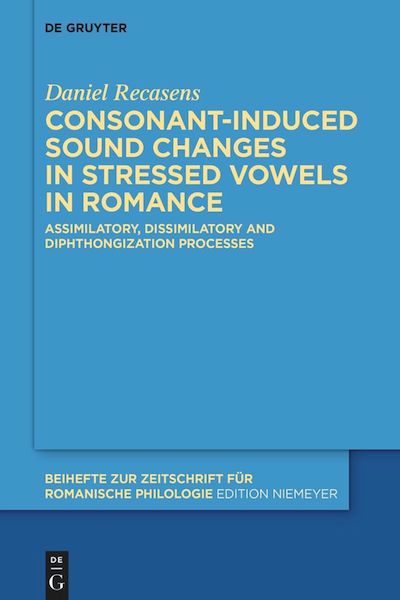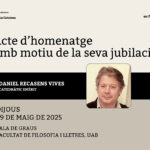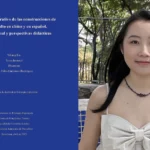5 juliol, 2022

Autors:
Victor Acedo-Matellán, Jaume Mateu & Anna Pineda
Títol:
Argument Structure and Argument Realization (dins The Cambridge Handbook of Romance Linguistics)Editorial: Cambridge University Press
Data de publicació: Juny del 2022
Més informacióThis chapter provides a critical survey of some of the most significant phenomena that show how the study of Romance languages can make a strong contribution to our current theoretical understanding of the principles and empirical generalizations relevant to argument structure and its realization. After defining the notion of argument structure, two different current theoretical approaches to the lexicon–syntax interface are briefly presented: the projectionist one, which is typically adopted in lexicalist frameworks, and the constructivist/neo-constructionist one, which is assumed in non-lexicalist frameworks. The selection of empirical phenomena made in this chapter includes a discussion of the well-known distinction among intransitive verbal predicates (unaccusatives vs unergatives) in the context of Romance linguistics, a review of the crucial role of the Romance clitic se in argument structure and argument realization, a survey of some relevant explorations of events of transferal based on the grammar of dative clitics as well as other aspects of dative-marked arguments in Romance languages, and, finally, a discussion of the prominent place that these languages occupy in the huge literature on Talmy’s lexicalization patterns together with an overview of several refinements made to his initial typology of motion events.
27 febrer, 2023

Autors:
Evripidis Tsiakmakis, Joan Borràs-Comes i M.Teresa Espinal
Títol:
On the distribution and interpretation of voice in Greek anticausatives. Frontiers in PsychologyEditorial: Frontiers
Data de publicació: 23 de febrer del 2023
Pàgines: 15 Text completThis paper provides experimental evidence in support of the view that Greek does not have three productive morphological classes of anticausative verbs, but only two: the class of verbs that bear non-active voice morphology and the class of verbs that are morphologically active. Across two experiments, native Greek speakers are found to prefer for each anticausative verb either non-active or active voice morphological marking, in the presence or absence of explicit contextual information. It is also shown experimentally that native speakers prefer an interpretation that involves a specific cause for all anticausatives, especially when the existence of such a cause is favored by the contextual setting. Our empirical findings are consistent with the view that the Voice Phrase that is realized as non-active voice morphology in Greek anticausatives is expletive. From a theoretical perspective, we analyze the expletiveness of this Voice projection as the result of semantic redundancy: the Voice head of Greek anticausatives combines with a v head that encodes a redundant cause meaning component and is, therefore, interpreted merely as introducing an identity function.
13 abril, 2023
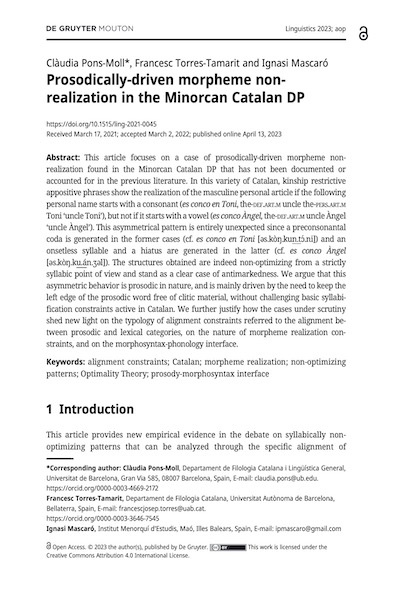
Autors:
Clàudia Pons-Moll, Francesc Torres-Tamarit i Ignasi Mascaró
Títol:
Prosodically-driven morpheme non-realization in the Minorcan Catalan DPEditorial: Linguistics, De Gruyter Mouton
Data de publicació: Abril del 2023
Més informació
Text completThis article focuses on a case of prosodically-driven morpheme non-realization found in the Minorcan Catalan DP that has not been documented or accounted for in the previous literature. In this variety of Catalan, kinship restrictive appositive phrases show the realization of the masculine personal article if the following personal name starts with a consonant (es conco en Toni, the-def.art.m uncle the-pers.art.m Toni ‘uncle Toni’), but not if it starts with a vowel (es conco Àngel, the-def.art.m uncle Àngel ‘uncle Àngel’). This asymmetrical pattern is entirely unexpected since a preconsonantal coda is generated in the former cases (cf. es conco en Toni [əs.kòŋ.kun.tɔ́.ni]) and an onsetless syllable and a hiatus are generated in the latter (cf. es conco Àngel [əs.kòŋ.ku.án.ʒəl]). The structures obtained are indeed non-optimizing from a strictly syllabic point of view and stand as a clear case of antimarkedness. We argue that this asymmetric behavior is prosodic in nature, and is mainly driven by the need to keep the left edge of the prosodic word free of clitic material, without challenging basic syllabification constraints active in Catalan. We further justify how the cases under scrutiny shed new light on the typology of alignment constraints referred to the alignment between prosodic and lexical categories, on the nature of morpheme realization constraints, and on the morphosyntax-phonology interface.
4 setembre, 2023
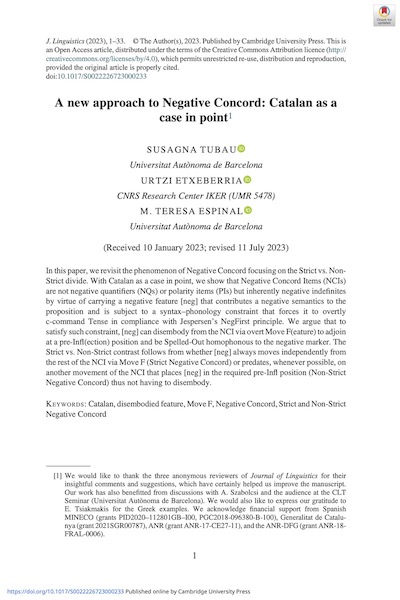
Autors:
Susagna Tubau, Urtzi Etxeberria i M.Teresa Espinal
Títol:
A new approach to Negative Concord: Catalan as a case in pointEditorial: Journal of Linguistics (Cambridge University Press)
Data de publicació: Juliol del 2023
Pàgines: 33 Més informacióIn this paper, we revisit the phenomenon of Negative Concord focusing on the Strict vs. Non-Strict divide. With Catalan as a case in point, we show that Negative Concord Items (NCIs) are not negative quantifiers (NQs) or polarity items (PIs) but inherently negative indefinites by virtue of carrying a negative feature [neg] that contributes a negative semantics to the proposition and is subject to a syntax–phonology constraint that forces it to overtly c-command Tense in compliance with Jespersen’s NegFirst principle. We argue that to satisfy such constraint, [neg] can disembody from the NCI via overt Move F(eature) to adjoin at a pre-Infl(ection) position and be Spelled-Out homophonous to the negative marker. The Strict vs. Non-Strict contrast follows from whether [neg] always moves independently from the rest of the NCI via Move F (Strict Negative Concord) or predates, whenever possible, on another movement of the NCI that places [neg] in the required pre-Infl position (Non-Strict Negative Concord) thus not having to disembody.


